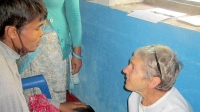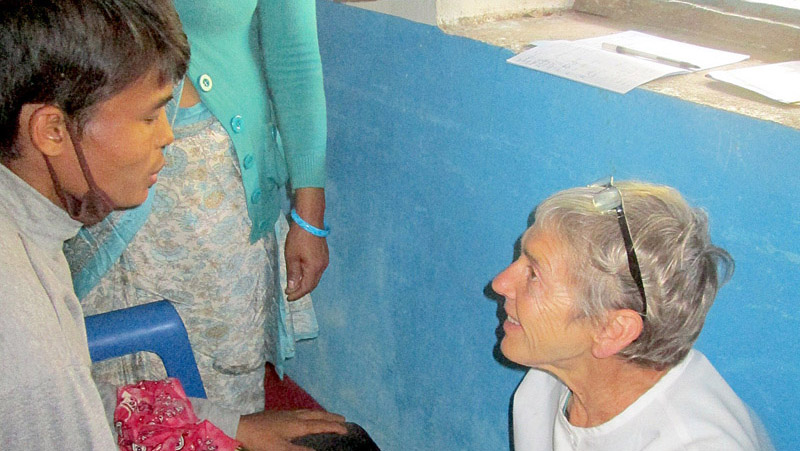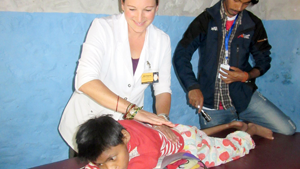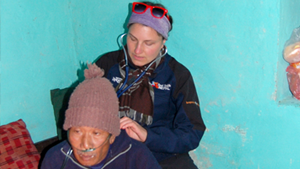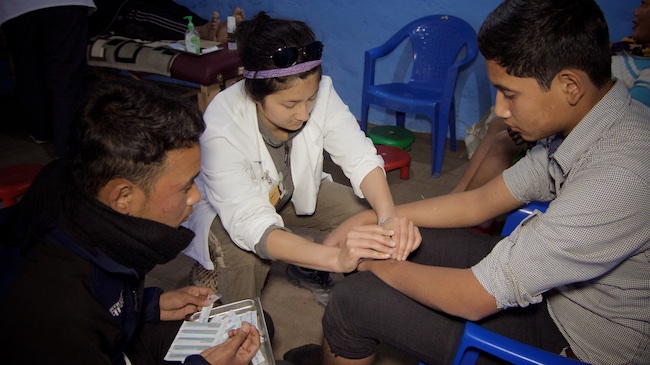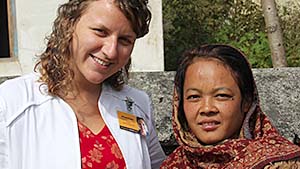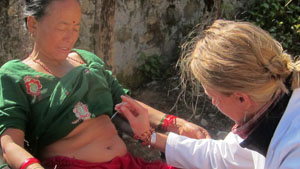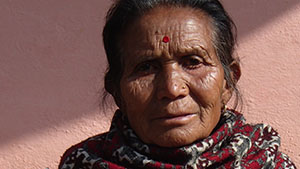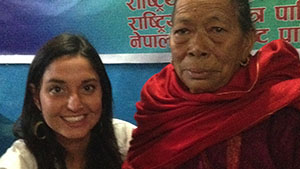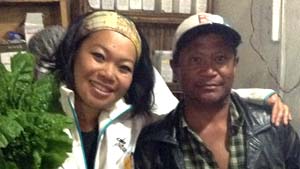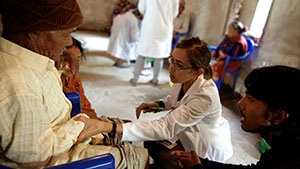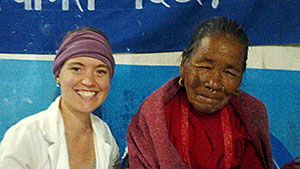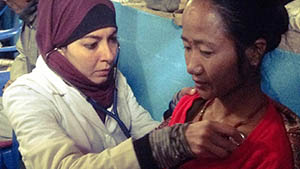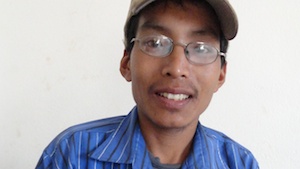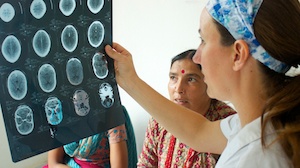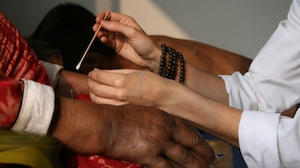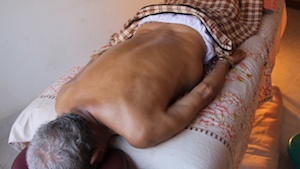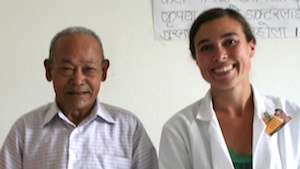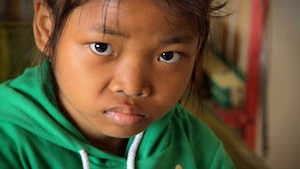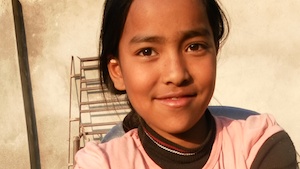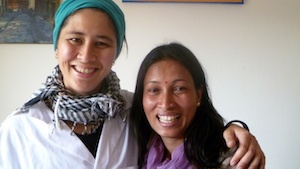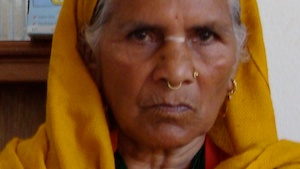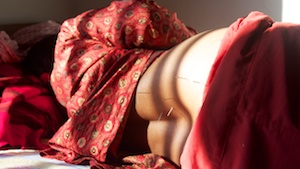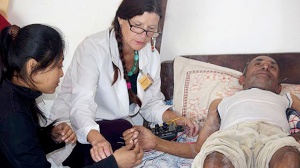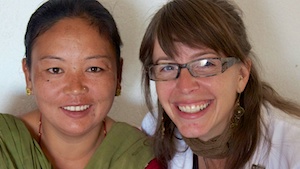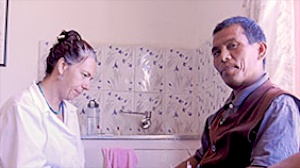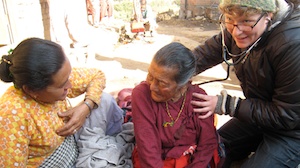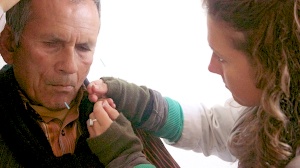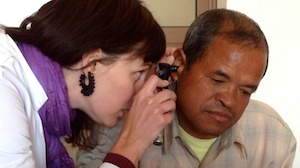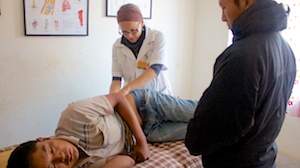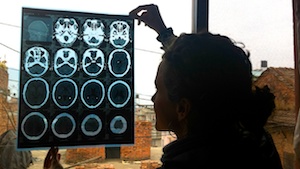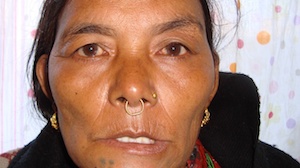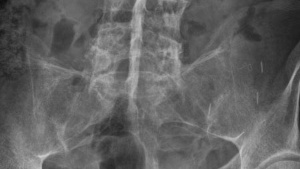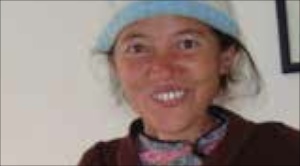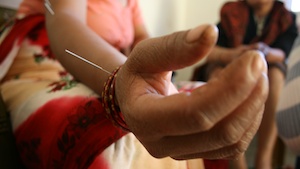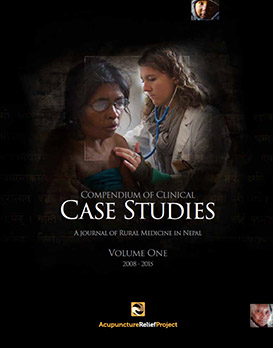Joy Earl, LAc, MAcOM
November 2013
OVERVIEW
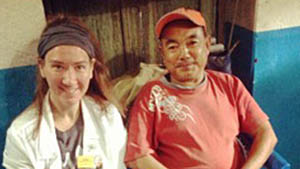 53-year-old male presents with right-sided hemiplegia following a hemorrhagic stroke 1 year ago. Patient complaints include decreased range-of-motion, pain, numbness and weakness of his right side including the shoulder and arm. Concluding 10 treatments, comprising of acupuncture with electrical stimulation and Chinese herbs, the patient reports decreased pain, improved range-of-motion (ROM), increased sensation in limbs, and greater muscle strength.
53-year-old male presents with right-sided hemiplegia following a hemorrhagic stroke 1 year ago. Patient complaints include decreased range-of-motion, pain, numbness and weakness of his right side including the shoulder and arm. Concluding 10 treatments, comprising of acupuncture with electrical stimulation and Chinese herbs, the patient reports decreased pain, improved range-of-motion (ROM), increased sensation in limbs, and greater muscle strength.
SUBJECTIVE
53-year-old patient presents with right-sided hemiplegia after suffering a hemorrhagic stroke 11 months ago. On the day of the stroke, patient experienced muscle weakness along with headache and seeing red. Patient entered shower to pour cold water over his head when he began to feel sensations of insects crawling up the left side of his body. The feelings began at his toes, ascending up his lateral and anterior legs, left hypochondriac region, lower and upper arms, side of his neck and then to his head, where he felt pressure in the parietal region, and lost consciousness. When he regained consciousness, he experienced paralysis on his right side. Patient was sent to Chitwan Medical Teaching Hospital in Bharatpur where he was hospitalized for 2 weeks. After the hospitalization, he attended physical therapy sessions including electrical current therapy for 2 weeks. Patient reports having received several medications unknown to him, and he did not undergo any surgical procedure. 12 months prior to the stroke, he was prescribed blood pressure medication, though was not consistently compliant. While hospitalized during the first 3 days after incident, his blood pressure (BP) was 240/120.
On initial visit to the clinic, patient complaints include a heavy feeling and numbness on the right side of his body, pain in the right shoulder near deltoid attachment, especially with grasping or rotating of arm, pain in upper right side of the neck with movement of his arm, pain in right thumb and wrist especially when grasping, an inability to move shoulder, and accompanying pain with active and passive rangeof-motion. He also complains of overall body stiffness, inability to move toes 2, 3 or 4, feeling of coldness in the toes and limping while walking.
Secondary complaints include problems with concentration and with speech when speaking fast, trembling of right hand with certain activities, as well as the inability to dress himself without assistance.
The patient reports that he is currently taking Amlod, a calcium channel blocker, and Losartan/Hydrochlorothiazide, a diuretic, for maintenance of hypertension.
Bowel movements are normal with no complications regarding digestion. The patient reports frequent and urgent urination, nocturia at a frequency of 3-4 times per night, and water intake of 3-4 glasses per day.
OBJECTIVE
Patient seems solemn and reserved.
Pulse is wiry and thin on the right side, and wiry, thin and slippery on the left.
Tongue presents as thin and pink with a thin, white coat and stagnation of sublingual veins. Initial blood pressure is 160/100.
ROM in the right arm and shoulder exhibits an inability to actively adduct without causing severe pain to upper shoulder and neck. Lateral flexion of the neck 35 degrees to the right induces pain to the right shoulder proximal to the AC joint. Supination of forearm, beyond 90 degrees, creates moderate to severe pain in anterior shoulder near AC joint. Patient is able to extend leg to full range with no difficulty or pain. Patient is able to move each individual finger, but demonstrates an inability to contract toes completely. The second, third and fourth toes on the right foot are permanently contracted in dorsiflexion. Strength/grasp test of the right hand indicates 30% less strength than left hand.
Sharp/dull sensory testing indicates deficits in the following dermatomes: C5, C6 and S1. They show no sensitivity to stimulation, while the dorsal aspect of foot and toes 2, 3 and 4 experience dull sensation, regardless of sharp stimulation.
Patient exhibits no difficulty in reciting the vowel sounds a, e, i, o, u, cha and la. His face appears symmetrical with no drooping of eyes and lips, or deviation of the tongue. No slurring is noticed upon speaking. His signature is precarious with significant trembling.
ASSESSEMENT
DX: Cerebrovascular accident d/t cerebral bleed; CVA indicates a hemorrhagic stroke leading to post-stroke sequelae with right-sided hemiplegia
TCM DX: Blood and qi deficiency with blood stasis causing blockage of channels and collaterals with internal wind
PROGNOSIS: Good; Although a complete recovery of motor and sensory skills is unlikely, prompt action following incident, including physical therapy, coupled with his overall constitutional health, significantly improves this prognosis. It is expected that acupuncture will continue to improve this patient’s condition.
PLAN
Treatment principles: Move blood, tonify qi, open channels, extinguish wind.
Acupuncture: 3 times per week for 5 weeks with a reevaluation at the 10th treatment; Focus on stimulating Yangming channels (Stomach and Large Intestine), as well as Gallbladder and Triple Burner channels on affected side. The unaffected side should have a constitutional focus of tonifying qi and blood while clearing any residual wind and phlegm.
Standard treatment comprised of electrical stimulation with leads connecting LI15 to TB5, LI11 to LI4, ST34 to ST41 and GB34 to LV3 at a continuous frequency of 5/100 for 20 minutes; Additionally, left-sided motor scalp line and leg motor and sensory lines are needled to stimulate the right side. Alternating pi ci treatments are performed with needles inserted 1 cun (1”) apart down entire Large Intestine channel from LI16 to LI2 and Stomach channel from ST34 to ST44.
Herbal formula, Bu Yang Huan Wu Tang, is prescribed at a dosage of 8 tablets BID, along with increased water intake of at least 8 glasses a day.
Patient is instructed to sign his name before each treatment to analyze trembling
OUTCOME
Patient was compliant with treatment plan, attending every appointment, and becoming increasingly more energetic and outgoing with each visit.
Patient reported a 50% overall improvement including complete resolution of the thumb, neck and shoulder pain. He reported the ability to straighten toes, as well as increased sensation and feeling of warmth in the toes and upper and lower legs where he had initially experienced numbness. Patient also described increased strength and less shaking in upper and lower leg.
Patient reports that he was now able to remove his shirt by himself. His blood pressure dropped to 130/90.
His signature was more developed, even and distinguishable with a 30% decrease in trembling.
CONCLUSION
Currently, the patient has had 11 treatments and is responding very well. His mental and physical states have greatly improved. He reports that before treatments, he had a feeling of numbness and heaviness all over his body. Now, on the day following a treatment, he feels a sensation of lightness in his body and spirit. He often mentions, “I feel great” and has become more cheerful since his first treatment.
The patient continues to maintain a treatment plan of acupuncture 3 times per week. Patient needs to continue this plan for 2 or more months. Following this time, a healthy and active lifestyle is important for maintenance of hypertension, as well as continued improvement.
It has been communicated to the patient that, with many post-stroke cases, the odds of a full recovery are not good. However, due to his diligence and compliance with treatments and care, both at the clinic and initially following incident, his chances for recovery are greater than most. He is reminded to maintain his motivation to recover, surround himself with encouragement, and believe in the mind’s ability to help the body heal.


